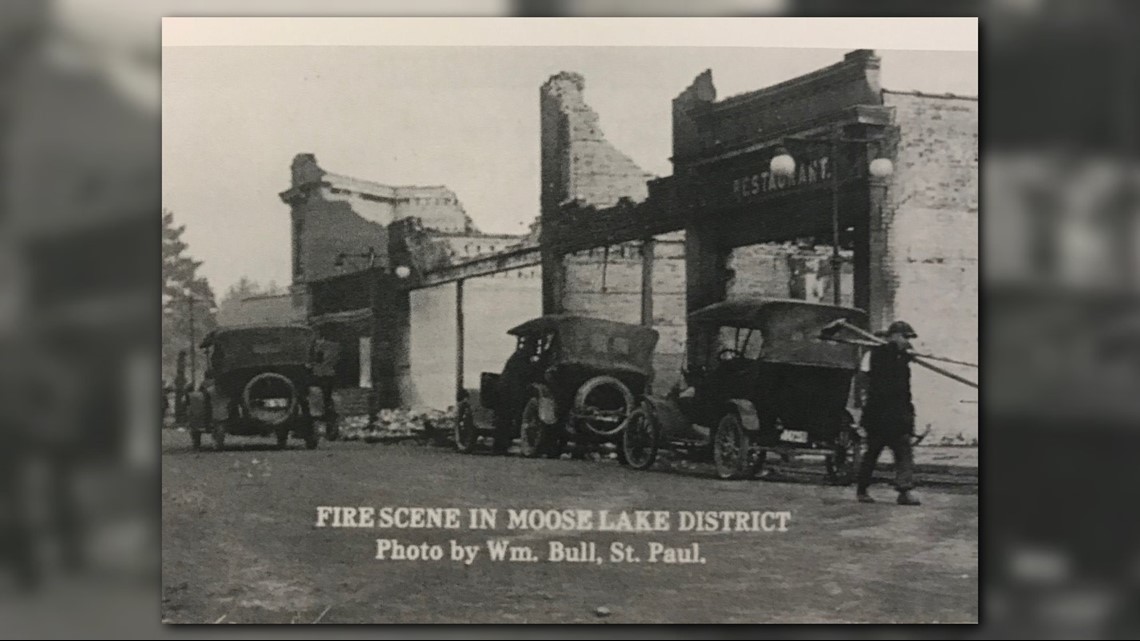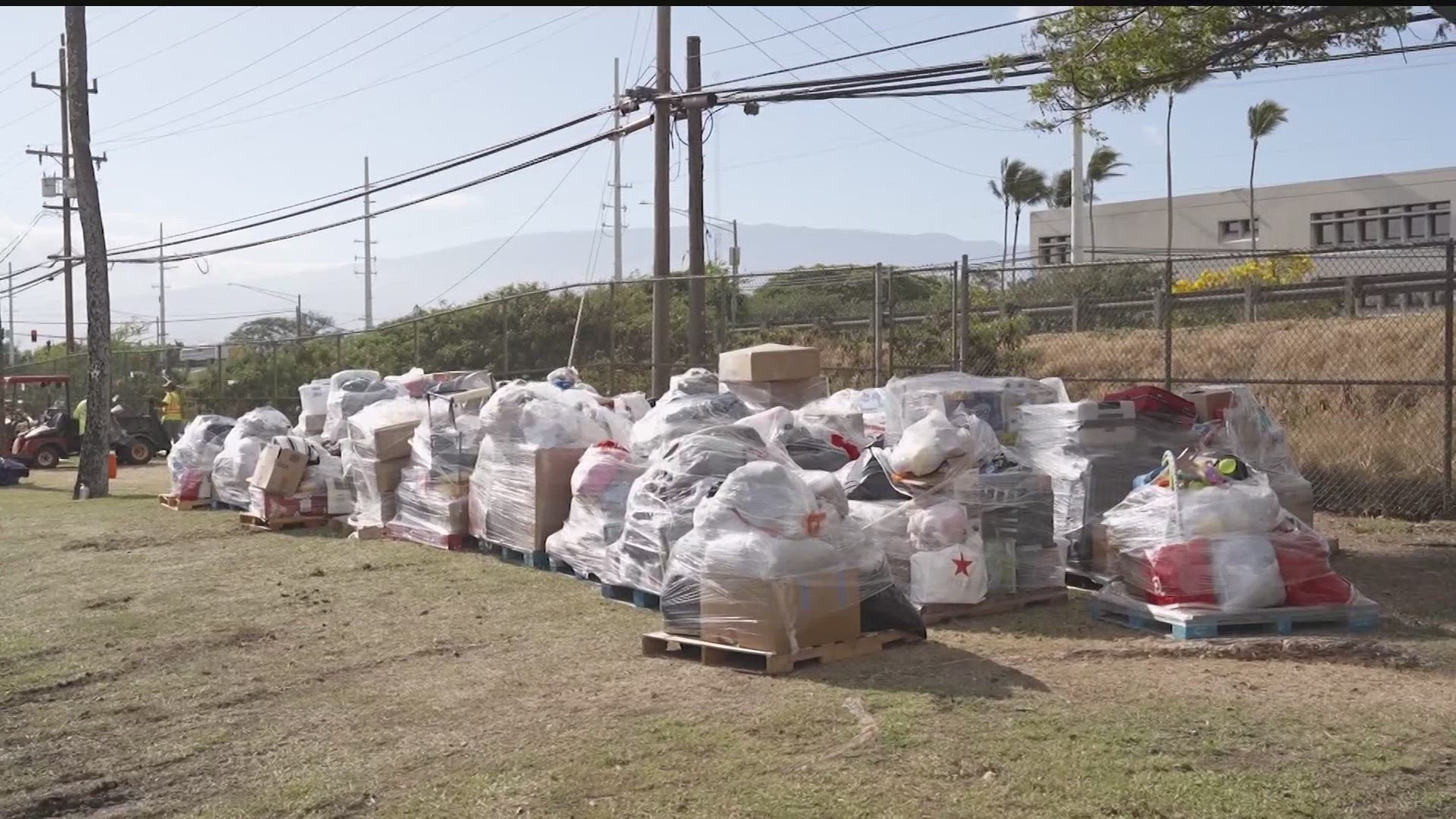MADISON, Wis. — Wildfires on the Hawaiian island of Maui killed at least 96 people, making it the deadliest U.S. wildfire in more than a century.
Emergency management officials say the death toll is expected to rise as cadaver dogs and searchers make their way through the ashes of Lahaina, a historical town of 13,000 where almost every building was destroyed in the blaze.
The Maui wildfires are currently the nation's fifth-deadliest on record, according to research by the National Fire Protection Association, a nonprofit that publishes fire codes and standards used in the U.S. and around the world. Authorities have not yet determined the cause of the three separate wildfires that were fueled by dry weather and the winds of a nearby hurricane.
A look at the other deadliest fires in U.S. history:
THE PESHTIGO FIRE
The deadliest U.S. wildfire on record claimed the lives of more than 1,000 people and decimated the logging town of Peshtigo, Wisconsin, about 50 miles (80 kilometers) north of Green Bay.
The Peshtigo Fire began on Oct. 8, 1871, and consumed roughly 1,875 square miles (4,856 square kilometers) of land, destroying all but one of the town's mostly wooden buildings. The exact death toll remains unknown, but most historians estimate that between 1,200 and 2,400 people were killed, according to the National Weather Service.
The Peshtigo Fire began the same day as the Great Chicago Fire, which killed roughly 300 people and destroyed thousands of buildings in the Midwest's largest city. In the days that followed, several other wildfires fed by summer drought and dry winds consumed parts of Michigan and Illinois.
THE CLOQUET AND MOOSE LAKE FIRES
Sparks from passing trains ignited brush along rail lines in northern Minnesota on Oct. 10, 1918. The summer was one of the driest the state had seen in years, and within two days gusting winds of up to 76 mph (122 kph) stoked the flames into the most destructive wildfire in Minnesota history. Several fires killed a combined 453 people and destroyed a total of 38 communities, including the towns of Moose Lake and Cloquet, according to the National Weather Service.


THE GREAT HINCKLEY FIRE
Twenty-four years before the Moose Lake and Cloquet Fires, another Minnesota wildfire claimed the lives of 418 people, according to the state Department of Natural Resources.
Three years of steadily drying soil, high temperatures and a covering of dead pine branches left behind by loggers created the perfect conditions for a deadly blaze, and on Sept. 1, 1894, the Great Hinckley Fire roared to life.
The fire wiped out several small communities on its way to Hinckley. When it arrived, a wall of flames surrounded the town on three sides. The lumber mill that drove the town's economy was piled high with logs and sawdust and sent flames and debris soaring hundreds of feet in the air, according to the Department of Natural Resources.
THE THUMB FIRE
Named for its location in Michigan's Thumb region north of Detroit, the Thumb Fire took place a decade after some of the many fires of 1871 devastated the same area. Those earlier wildfires didn't fully consume the trees they killed and left stretches of dry, dead timber standing in Sanilac, Lapeer, Tuscola and Huron Counties.
On Sept. 5, 1881, multiple fires in the Thumb area were strengthened by windy weather and raged across more than 1,560 square miles (4,040 square kilometers), killing 282 people, according to the National Fire Protection Association. In the town of Bad Axe, some 400 people sought shelter in a courthouse, where they survived by dousing the building with water from a nearby well, even as they were blinded by smoke, the Huron Daily Tribune reported.
RECENT WILDFIRES
In addition to the Maui fires, three wildfires that took place in recent years were listed among the 10 deadliest in U.S. history.
The Camp Fire in Paradise, California, in 2018 killed 85 people and forced tens of thousands of others to flee their homes as flames destroyed 19,000 buildings in Northern California.
The 2017 October Fire Siege and 2020 Fire Siege, also in California, killed 44 and 31 people respectively, according to the National Fire Protection Association.
Scientists predict that the conditions that lead to massive, deadly wildfires like those in Maui will become more common as climate change worsens. Climate change has led to higher temperatures, increased dry and dead vegetation, low soil moisture and stronger storms.
Watch more local news:
Watch the latest local news from the Twin Cities and across Minnesota in our YouTube playlist:
WATCH MORE ON KARE 11+
Download the free KARE 11+ app for Roku, Fire TV, Apple TV and other smart TV platforms to watch more from KARE 11 anytime! The KARE 11+ app includes live streams of all of KARE 11's newscasts. You'll also find on-demand replays of newscasts; the latest from KARE 11 Investigates, Breaking the News and the Land of 10,000 Stories; exclusive programs like Verify and HeartThreads; and Minnesota sports talk from our partners at Locked On Minnesota.
- Add KARE 11+ on Roku here or by searching for KARE 11 in the Roku Channel Store.
- Add KARE 11+ on Fire TV here or by searching for KARE 11 in the Amazon App Store.
- Learn more about the KARE 11+ app for Apple TV in the Apple App Store.
- Learn more about KARE 11+ here.

